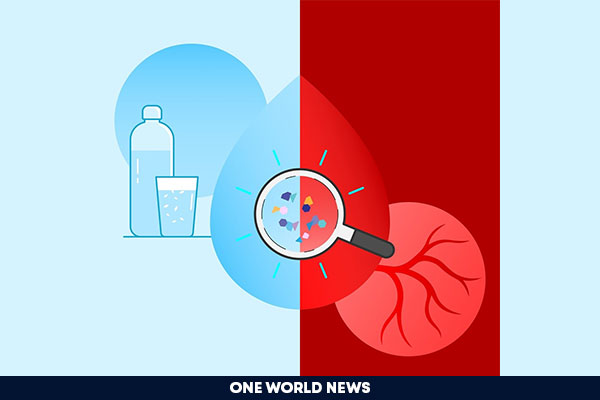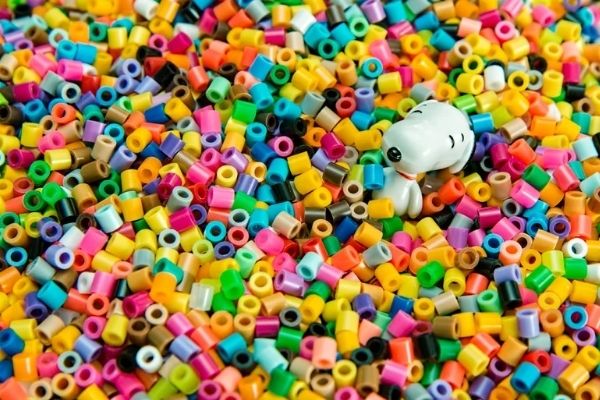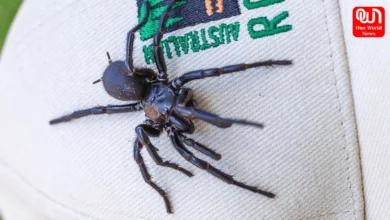
From Cosmetics To Food, Microplastics Are Making Their Way To The Human Body
Microplastics found in the human blood- Remember how our parents would stop us from using plastic bottles to drink water? Fearing that we would end up consuming some of its plastic and fall sick, they asked us to use copper or steel bottles only. It turned out that their fear has become a reality now. Several studies have found plastics around us in almost everything in the form of microplastics. From the highest mountain peak of Everest and the deepest oceans to the Sahara desert and Antarctica, plastic is making its way to the human body through food, water, and even air. Recently, microplastics found in the human blood and scientists call it a breakthrough.
Scientists have been studying microplastics for the past two decades, however, the majority of the research was focused on marine life. Research on microplastics and their impact on the human body is relatively new and their potential impact on human health is still unknown. However, scientists believe that humans are consuming thousands of tiny plastic particles on a regular basis without realizing it. In March last year, Albert Koelmans, an environmental scientist at Wageningen University in the Netherlands, reported that children and adults might ingest anywhere from dozens to more than 100,000 microplastic specks each day.
Several recent pieces of research have found that food, water, cosmetics, and even the common salt that we use for cooking are contaminated with microplastics. Though many experts believe in severe health consequences of consuming plastic, including cancer due to the carcinogenic properties in plastic particles, the actual health risks due to microplastics are still unclear. However, one shocking news came out this year when microplastics were discovered in the human blood for the first time.
Microplastics Found In The Human Blood
An estimated, humans are consuming anywhere from 39,000 to 52,000 microplastic particles a year. In a lifetime, an average human is consuming roughly 20 kilograms of plastic through various mediums. Humans are exposed to plastic particles in various forms, including invisible fibres of clothes, carpets, and cosmetics. The particles can be as small as a strand of human hair and can become airborne, if they are 250 micrometres or less in size, they can easily be inhaled.
The risk to children aged below 6-years is three times more than average and they might end up eating roughly 6 milligrams of plastic particles per kg of their body weight in a year. In 2017, scientists at Ghent University in Belgium found that humans are consuming 11,000 plastic particles each year through the seafood.
In March 2022, microplastics found in the human blood for the first time. 17 blood samples out of 22 were found contaminated with microplastics. The initial data does not provide information on the potential harm to the human body, but scientists believe that the microplastics might cause damage to human cells. The blood samples contained PET plastic, which is used in drinks bottles, polystyrene, which is used for packaging food, and polyethylene, which is used to make plastic bags.
The study suggests that microplastics can travel around the body and may lodge in organs. To better understand the impact of plastic on humans, a lot of research is going on different levels and it might take some time to reach a conclusion.

Microplastics In Cosmetics
Cosmetics and beauty industries are already one of the largest and fastest-growing industries. Their contribution to the economy is constantly growing, but they are making more harm to the environment and human health than they are doing any good to the economy. Most cosmetics and personal care brands use plastics as their main ingredients as a bulking agent for their products. From glitters in the bubble bath and toothpaste to Microbeads in exfoliating products, brands are using plastic particles in their products in large quantities.
A recent report published by the Plastic Soap Foundation says that 90 percent of the products they analyzed contained microplastics. The tiny particles of plastics were found in almost all the products, including shampoo, lipstick, suncream, and deodorant. Microplastics accounted for 87% of the products. The report says that only 4 percent of products of leading cosmetics brand L’Oreal Paris were found green, whereas, just 1 percent of products of Head & Shoulders were found green. The report analyzed 7,704 products from the top 10 leading brands, including L’Oreal Paris, Garnier, Gillette, Nivea, and Head & Shoulders.

In Europe, an estimated 3800 tonnes of microplastics are washed into the environment through cosmetics and care products. According to the European Chemicals Agency (ECHA), every minute over seven kilos of microplastics from cosmetics and personal care products end up in the European environment.
Conclusion
Today, we produce over 400 million tonnes of plastic every year, and at least 14 million tonnes of plastic waste are washed into the ocean globally. The plastic pieces were once common in the stomach of fishes, sea birds and other sea creatures. Now, plastic is making its way to the human body and scientists have warned of serious health consequences. Plastic isn’t just making humans vulnerable to severe health threats, but the entire ecosystem too. Each year hundreds of thousands of sea creatures are dying due to plastic consumption. It is high time that we should choose sustainable living and limit our plastic use. Say no to PLASTIC today.








